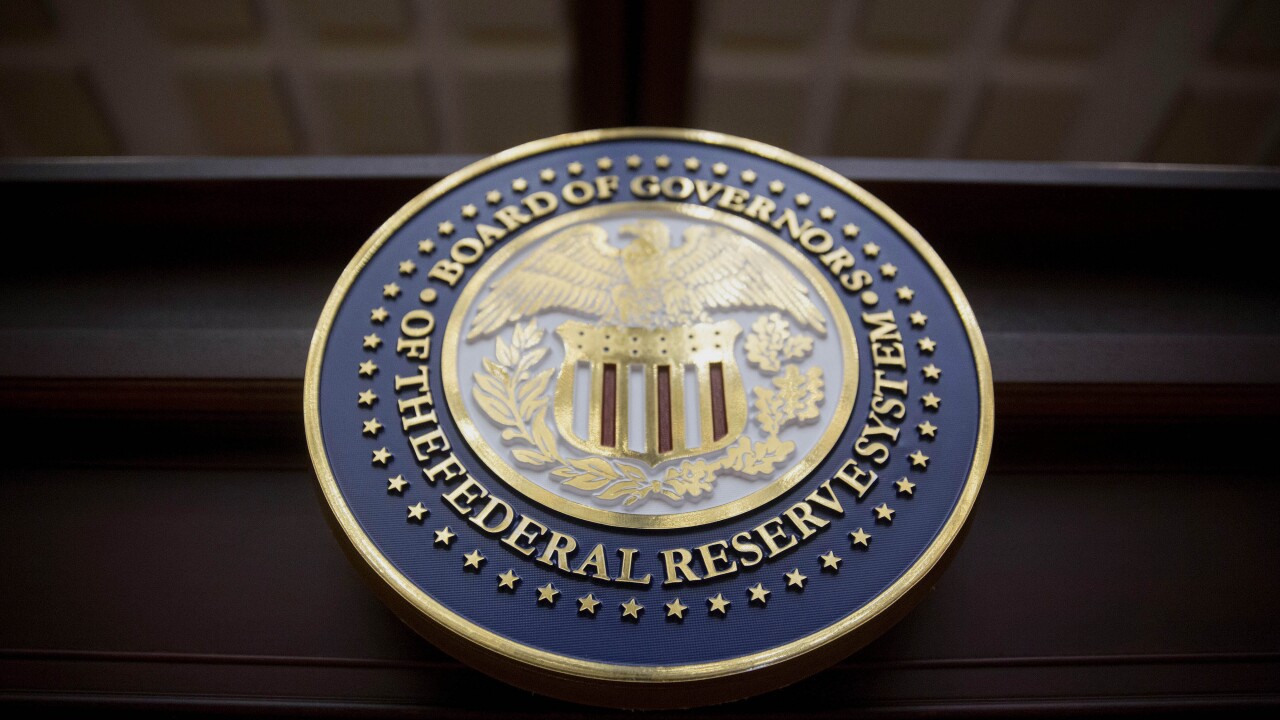
Banks ended 2024 with strong earnings growth driven by lower costs, higher revenue streams, and improved investment performance, according to the Federal Deposit Insurance Corp.'s most recent Quarterly Banking Profile released Tuesday.
The FDIC report showed that U.S. lenders maintained strong capital and liquidity positions overall, but noted that smaller banks are still disproportionately affected by rising expenses, unrealized losses and market volatility.
The FDIC's QBP for the fourth quarter of 2024 showed that banks pulled in $268.2 billion in net income last year — a 5.6% increase from 2023 — driven by lower interest expenses, higher noninterest income, and reduced losses from securities sales.
While the FDIC typically holds a press conference upon the release of the QBP, none was held to accompany Tuesday's report.
Banks' improved financial condition continued in the fourth quarter, with FDIC-insured banks posting $66.8 billion in net income — a $1.5 billion, or 2.3%, increase from the prior quarter. FDIC says the gains were due to "recent short-term interest-rate cuts, which caused interest expenses to decline more than interest income." Net interest income — what banks earn on the spread between interest they collect and what they pay on liabilities like deposits — also benefitted from the interest rate environment, reaching $3.8 billion in the fourth quarter.
Net interest income industry-wide grew as falling rates reduced interest expenses more than income. The industry's net interest margin rose for a second straight quarter to 3.28%, surpassing pre-pandemic levels.
By contrast, financial conditions for smaller firms were more downcast than for the industry overall. The over 4,000 FDIC-insured community banks — which federal regulators define as firms with no more than $10 billion in assets — saw net income decline 6.5% from the third quarter to $6.4 billion in Q4, driven by higher noninterest and provision expenses, along with $565.9 million in realized losses on securities sales — losses that eclipsed those small firms' earnings.
Community banks saw net income decline by 2.4% to reach $25.9 billion, largely due to higher expenses. Total loans in the industry grew by $105.2 billion, or 0.8%, in the fourth quarter. This increase stemmed largely from reclassifications of certain loan products and organic growth in credit card loans and loans to non-depository financial institutions, according to the agency.
"The largest portfolio increases were reported in 'all other' loans and loans to non-depository financial institutions, largely due to reclassifications following the finalization of changes to how certain loan products should be reported," an agency release
Asset quality remained generally strong despite some deterioration. The past-due and nonaccrual rate rose to 1.60% — six basis points up from the third quarter of 2024 — with credit cards and commercial real estate loans representing the biggest sources of nonpayment. The industry's fourth quarter net charge-off rate of 0.70% — 3 basis points higher than the previous quarter and 19 basis points higher than a year prior — exceeded pre-pandemic averages.
One bank —- The First National Bank of Lindsay, Oklahoma — failed in the fourth quarter, and was later acquired by First Bank & Trust Co., Duncan, OK. The Deposit Insurance Fund balance rose to $137.1 billion in the fourth quarter, with the reserve ratio reaching 1.28%, a three basis point increase from the third quarter. The FDIC says it remains on track to meet its statutory 1.35% reserve ratio target by 2028.
Forgoing a press conference on the fourth quarter's results was not the only change as of Tuesday's report. FDIC Acting Chair Travis Hill also says it will no longer disclose the total assets of banks on the Problem Bank List, but rather only the number of firms — totaling 66 in the fourth quarter, making up 1.5% of all institutions.
This decision, according to acting chair Hill, was made to avoid problems with asset disclosures. Hill said often the disclosure of the total assets held by "problem banks" can lead to misidentifications, disorderly bank runs, or hesitation by supervisors to downgrade troubled banks. Acting Chairman Travis Hill reaffirmed the FDIC's commitment to transparency but emphasized that disclosures should not compromise financial stability. The agency will continue to enhance transparency where it does not pose risks to the banking system.
"The FDIC is not disclosing total assets on the Problem Bank List as part of the QBP materials and will not do so going forward, returning to the original practice of only disclosing the total number of banks on the list," he said in a statement. "Upon becoming Acting Chairman, I issued a statement that noted the FDIC would 'expand transparency in areas that do not impact safety and soundness or financial stability.' We will continue to seek to enhance transparency in areas that do not negatively impact safety and soundness or financial stability."






